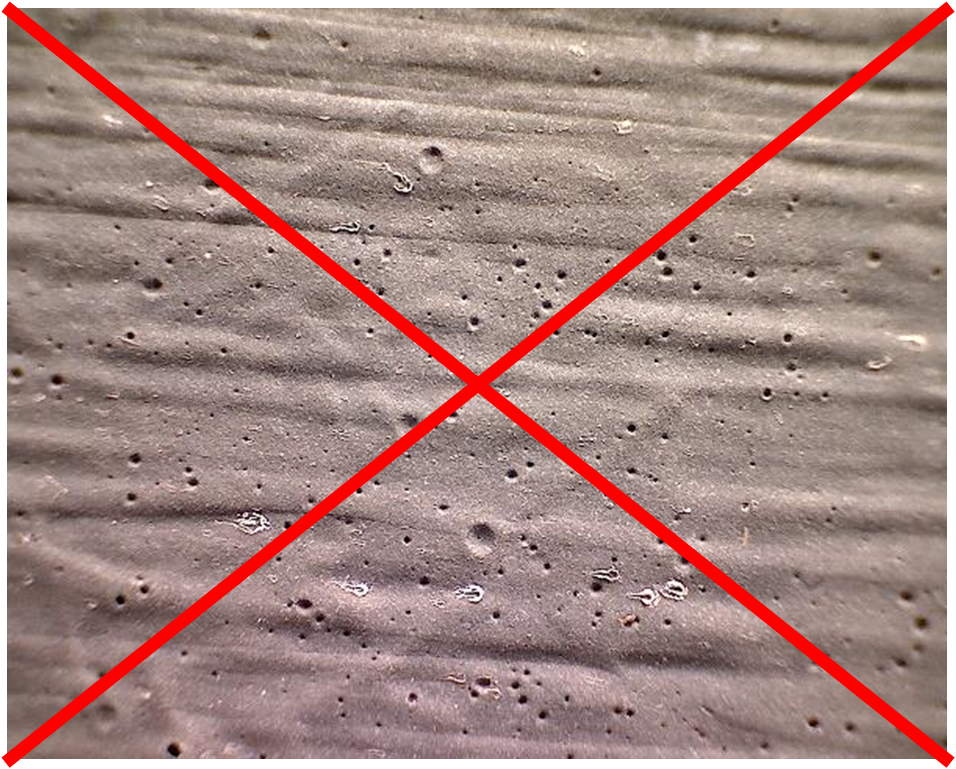When applying ZINGA on a Zinc surface, ZINGA has to come in contact with pure metallic Zinc to ensure a good electrochemical connection and hence a cathodic protection of the substrate.
If a Zinc rich substrate is subject to the environment, it will form Zinc salts (zinc oxides, zinc carbonates and others) which form a barrier.
This zinc salt barrier has to be removed before applying ZINGA.
For more information, please contact the Zingametall Technical Team.
ZINGA recharging (on old hot-dip)
It is very important to keep the following working order in mind:
1. Eliminating all dirt, grease, oil and salts
2. Total removal of rust
3. Roughening
4. De-dusting
The surface should first be cleaned to remove dirt, oils or greases by steam cleaning at 140 bar at 80 °C (preferably) or solvent cleaning (Zingasolv).
To remove rust and create a rough surface for ZINGA:
• Sweep blasting: sweep blasting the surface with angular non-metallic grit will provide an acceptable profile for the ZINGA to bond with. Once the sweep blasting is completed the surface should be de-dusted with non contaminated compressed air according to the standard ISO 8502-3 (class 2).
• Sponge blasting: the pliant nature of Sponge Media abrasives allows its particles to flatten on impact, exposing the abrasive. After leaving the surface, the media expands, creating a vacuum – entrapping most of what would normally have become airborne contaminant. Up to 95% of the abrasives is recyclable.
• Steel brush / Rotating abrasive disk / Chipping Hammer (less optimal).
Ensure that the surfaces are completely free of surface contamination, including chloride ion levels not exceeding 50 mg/m² (when tested accordance with ISO 8502).
If the structure to be treated shows over 5% of rust, then this means that the cathodic protection of the steel is for over 50% used and local touch-ups will not be sufficient.
The application of ZINGA on (old) hot-dipped or Zinganised surfaces is possible with brush, roller, conventional or airless spray.
It is to be noted that the first layer of ZINGA should never be applied by roller. The roller application doesn’t allow the ZINGA to penetrate sufficiently into the roughness profile of the steel.
 For the same reason, the first layer of ZINGA should be diluted a little more than indicated on the Technical Data Sheet.
For the same reason, the first layer of ZINGA should be diluted a little more than indicated on the Technical Data Sheet.
For brush application, it is advised to dilute the first layer of ZINGA 5 to 10% with Zingasolv to allow a brush smooth finish and a good penetration into the roughness.
Heavy brush marks (insufficient dilution and strong handling) which leave some parts of the structure too heavily coated (creation of pinholes and craters) and others not enough (insufficient protection – spot rusting), should be avoided at all costs.
For more information, please contact the Zingametall Technical Team.
ZINGA reloading
The surface should first be cleaned to remove dirt, oils or greases by steam cleaning at 140 bar at 80°C (preferably) or solvent cleaning (Zingasolv).
Old weathered ZINGA has a layer of Zinc salts which form a passive barrier on ZINGA. This zinc salt barrier has to be removed before applying ZINGA.
To test if all Zinc salts are removed: rub a clean test area with a clean, white, lint free cloth dipped in Zingasolv. If the white cloth shows a dark grey color, the surface is ready to coat. If the cloth remains white or light grey, the surface must be given more preparation by the chosen option.
For more information, please contact the Zingametall Technical Team.
